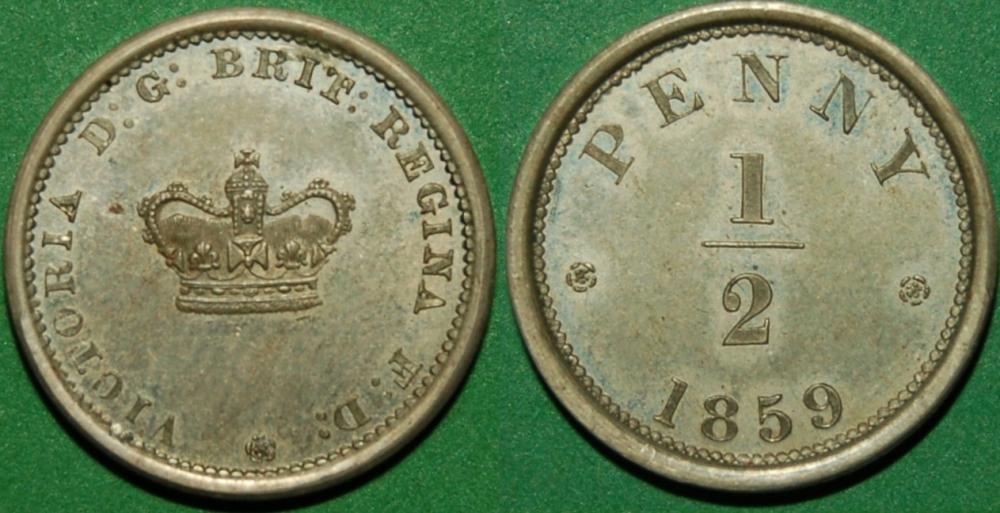-
Posts
12,740 -
Joined
-
Last visited
-
Days Won
339
Content Type
Profiles
Forums
Events
Downloads
Store
Gallery
Articles
Everything posted by Rob
-
Alex might have got hold of a batch of them. There has been a number of 20-50 lots of 100 year old coins touted around over the past few years. 50 mint state 1905 sixpences spring to mind
-
Just rummaging through my tickets and it appears that it was the one thousand and first coin they slabbed if the number 0001001 at the beginning means that. I've assumed so because the other info is definitely coin descriptive. FWIW, I have seen very few Ed.7 halfpennies with well struck up finger detail despite being unc. I suspect that the design was too fine to avoid blocking at this point.
-
When the auctioneer passes, it is because the reserve hasn't been reached. If that happens to be 20% under estimate, then so be it, but it could easily be at low estimate, or 40% below, even no reserve, but as happened in the December sale, they might still pass them if the lack of interest is too embarassing. Estimated at 1K and selling for 100 doesn't look good for the auctioneer
-
They aren't the easiest thing to get hold of. I got mine about 10 years ago in a CGS 80 slab, but I'm sure there are a few better pieces out there.
-
Normal for the Mail. Nothing in the real world is ever reported in it.
-
A considerable period of time must have elapsed between the early strikings and the later ones on account of the rusted reverses seen. This P724 (dies 2+A*) has large areas of rust, seen in front of Britannia. ex Hazlitt 1142, Sotheby 1909 & Foster 45, Glens 1953
-
Anne P724 pattern halfpenny obverse. This is the later obverse die, identifiable by the lack of serif to the base of the right limb of the N.
-
yes
-
This is just one of a number of patterns made in the period 1857-9 leading up to the bronze issues. Most of them had the word decimal in the legend, but not all. In fact some only had a number or fraction, or even nothing at all. You also had things like One Dime, One Centum, 10 Centimes etc, so they were clearly influenced by foreign currencies as well as retaining good old British units.
-
P2037, decimal pattern halfpenny struck in Cupro-Nickel. Ex Baron Ferrari de la Renotiere 399, (Sotheby 1922), V M Brand & M J Freeman 221. The wax is from the 1922 sale.
-
Looks like a 6+G to me. Having said that, the image quality doesn't help. I've got a 6+G 1 over higher one on the site for comparison if you need it. https://www.rpcoins.co.uk/collections/half/products/00002572
-
It's a rev B with the dots on the shield, so restricted to those years. You can't tell which though.
-
Oh, the other way round then. Sorry. eBay and its working don't figure too high on my list of useful info.
-
That's going to end in tears. I thought someone said you were only covered up to a limit which is lower for new sellers.
-

The double florin thread
Rob replied to Mynki's topic in British Coin Related Discussions & Enquiries
yep -
-
Last one for tonight, and one that I forgot to put on the revised list of halfpennies - will do for the next edition. A halfpenny struck on a piece of brass bar when the mint relocated from Tower Hill to Iver during WW2. Used to test the striking pressure as I understand.
-
-
-
-
And the reverse. There is a note at the bottom of Norweb 2 lot 520 stating the other known example of this type has the provenance ex Caldecott, ex Dean Rogers, Brand-Lichtenfels Sale (Kreisberg/Schulman, New York 18/3/64 lot 2737) and SNC March 1965 (CC1324). However, the appearance of a rather worn example in Baldwin’s Basement sale suggests that piece was the ex Roger’s example as it was accompanied by a note stating a gift from C W Peck 1951 who noted there were only 2 examples known. As Peck’s piece passed to Norweb when his collection was sold, this would therefore appear to be a third and previously unrecorded third example, but a bit of digging has shown this to be the Caldecott piece, bought by Brand, and sold in the US in 1964 before reappearing in the Circular in 1965. Norweb's went to Nicholson. It was the Rogers piece surfacing that finally resulted in 1 and 1 making 3, because it had been in Baldwin's basement since Rogers' death in 1961 and so could not be either this piece, or Norweb's
-
-
-
-


